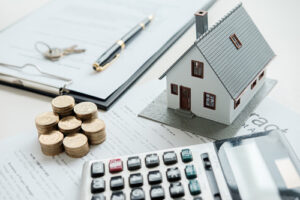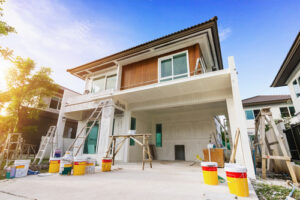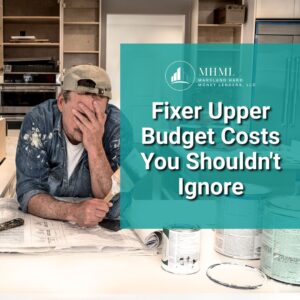BRRRR Method Explained: Is It Still Effective in 2024?
The BRRRR method, known as (Buy, Rehab, Rent, Refinance Repeat,) is a real estate investment approach with a focus on acquiring undervalued properties, renovating them, renting them out, and using the increased equity to refinance and repeat the process with another property. The goal of this method is to build a real estate portfolio of income-generating rental properties while creating a long-term equity appreciation.
If you’re an investor wondering whether this strategy is still effective in 2024, this guide is just what you need.
How the BRRRR Method Works
For an investment strategy to be effective, it is essential to follow the BRRRR steps—buy, rehab, rent, refinance, repeat—in sequential order. This method has proven to be particularly efficient in real estate markets, where residential hard money lenders in Maryland can play a crucial role in the success of real estate investments. Here, we outline the specifics of each step:
 Buy
Buy
The BRRRR method starts with buying. You need to identify properties that have potential but are undervalued or distressed. This requires a detailed eye for market trends, local dynamics, and an understanding of the property’s essential value. Additionally, there’s one term that you need to take into consideration before buying: ARV or (after-repair value.)
ARV represents the estimated worth of a property after it has undergone renovations or repairs. It’s a crucial metric for investors to determine potential profits when flipping or rehabilitating properties. But how do we calculate the ARV?
(Purchase Price) + Value Added through Renovation = ARV
General Rule of Thumb: When deciding how much to offer on the home, we recommend the 70% rule to evaluate the maximum price to pay for a property. For example, if you’re eyeing a property with a $200,000 ARV, following the 70% rule means you should not invest more than $140,000 into purchasing and fixing up the home. This approach ensures a buffer for profit and unexpected costs.
Remember, when buying, the goal is to secure a property below market value, ensuring a solid foundation for future profitability.
Rehab
Once you have secured your ideal property, now it’s time to fix up the place. When renovating a house, your initial steps should focus on making sure everything meets the current local standards and that the house is safe for people to live in. After addressing these essentials, it’s time to figure out which upgrades will boost the property’s value.
 Here are some step-by-step processes you can take when renovating a property:
Here are some step-by-step processes you can take when renovating a property:
- Assessment and Planning: Begin with a thorough evaluation of the property. Identify what needs repair, what could benefit from an upgrade, and what can be left as is. Remember, not every improvement increases value – prioritize those that do.
- Budgeting: Once you’ve listed the necessary works, it’s time to set a budget. A common pitfall investors face in rehabbing is underestimating costs. To avoid this, add a contingency buffer to your budget. This extra can be a lifesaver for unforeseen expenses.
- Execution: With execution, whether you’re DIY-ing or hiring professionals, overseeing the work is key. If you don’t want hassle on your end, hire professionals like property managers to do the work for you.
- Focus on Value-Adding Features: Focus on making improvements to the property that increase its After Repair Value (ARV). Upgrading kitchens and bathrooms usually give you the most of your buck in terms of return on investment (ROI). Also, remember that the first impression a property makes is crucial in real estate, so make sure to style up the curb appeal to attract potential buyers or renters.
- Compliance and Safety: Ensure all renovations meet local building codes and regulations. Not only is this about ethics, but it’s also about avoiding costly legal headaches down the line.
Rent
After successfully rehabbing the property, the next crucial step in the BRRRR method is renting it out. This phase is about generating steady cash flow and beginning to regain your investment. To maximize your rental income and attract quality tenants, make sure to start with market research.
 The 1% Rule
The 1% Rule
In addition to conducting a comprehensive analysis of the local rental market, it’s essential to apply the 1% rule for pricing your rental property. The 1% rule states that the monthly rent should be at least 1% of your property’s purchase price. For example, if you purchased a property for $100,000, you should aim to rent it out for at least $1,000 per month.
This rule helps investors quickly assess whether a property can generate adequate cash flow. However, you can adjust this figure based on your market research, considering the average rent for similar properties in your area to competitively price your rental without undermining your investment’s potential profitability.
Tenant Screening
A thorough tenant screening process is crucial, including credit checks, employment verification, and references from previous landlords. This phase under the “Rent” step is not just about filling vacancies but ensuring that those who occupy your property are reliable, financially responsible, and likely to maintain a harmonious relationship with you and the property itself.
Refinance
Once you’ve got a reliable renter, think about using something called a cash-out refinance loan. It’s a special kind of loan that lets you turn your growing equity into actual cash. You can get this money from banks or private lenders. It often ends up being more than what you first put in.
It’s like a cycle that helps your property collection grow without needing more of your own money. But remember, getting this loan and dealing with its costs need some careful planning.
Qualifying for Refinancing
Before proceeding with property refinancing, it’s essential to meet certain qualifications. These requirements typically include having a minimum credit score. To ensure eligibility for refinancing, consider the following tips:
- Credit Score: With a credit score of around 620, you are on the lower end of what many lenders typically consider for refinancing. While it is possible to qualify, the terms might not be as favorable as they would be with a higher score. Some lenders specialize in working with investors with lower credit scores, and they are called hard money lenders.
- Debt-to-Income Ratio (DTI): A DTI of 50% or less is relatively high but might still be acceptable for some lenders, especially if the income generated from the property is stable and reliable.
- Equity: Having at least 25% equity in the property after rehab is a strong position for refinancing. This equity stake demonstrates to lenders that you have a significant investment in the property, reducing their risk. An appraisal will be required to confirm the property’s value and your equity stake.
- Seasoning Period: Lenders often require a seasoning period of 6-12 months before allowing a refinance. This period allows the lender to see a track record of rental income and ensures the property’s value stabilizes post-rehab. The exact seasoning period can vary by lender, so it’s important to verify this requirement upfront.
When looking to refinance, it’s critical to prepare your financial documents thoroughly, including proof of income, property expenses, and the lease agreement for the rented property.
Repeat
This final step in the BRRRR method is where your investment strategy compounds. After successfully refinancing, you can use the excess from the new loan to pay off any existing debt and, ideally, have extra cash left over. This cash can then be reinvested into purchasing another undervalued property to start the process over again.
The “Repeat” step leverages the equity and cash flow you’ve built from your previous investments to fund future projects, enabling a cycle of continuous property acquisition and portfolio growth.
Pros and Cons of the BRRRR Method
Now that you know how the BRRRR method works, it’s time for you to understand the pros and cons. Understanding these factors will help you with the insight needed to make informed decisions when trying to invest in this real estate strategy.
Pros
 The BRRR method capitalizes on the potential for maximizing investment returns through the rehabilitation and efficient management of properties. Some advantages or benefits of the BRRRR method are the following:
The BRRR method capitalizes on the potential for maximizing investment returns through the rehabilitation and efficient management of properties. Some advantages or benefits of the BRRRR method are the following:
- Wealth Building: By purchasing undermarket properties, enhancing their value through renovations, and then refinancing based on the new, higher value, investors can potentially extract more capital. This approach not only recycles the initial investment for future properties but also capitalizes on the increased property value, laying a strong foundation for long-term wealth accumulation.
- Passive Income: Renting out rehabilitated properties creates a steady stream of passive income. This income can cover the mortgage and operational costs while generating surplus cash flow. Over time, as rental prices potentially increase and mortgages decrease or are paid off, the passive income can significantly grow, offering a sustainable source of earnings with minimal ongoing effort.
- Continuous Equity: Through the BRRRR method, investors continuously build equity in their properties. The initial rehab process increases the property’s value, and as tenants pay down the mortgage, the investor’s equity in the property grows. This increase in equity can be leveraged for further investments, enhancing the investor’s net worth and investment portfolio resilience.
Cons
Now that you’re acquainted with some of the advantages, let’s discuss the drawbacks, or cons, of implementing the BRRR method in your real estate investments:
- Tenant Risks: Finding and managing tenants is a crucial part of the BRRRR strategy. Problems such as late payments, property damage, or legal issues with tenants can significantly impact the profitability and overall success of the investment. Additionally, tenant turnover can result in vacancy costs and additional expenses for finding new renters.
- Speculation is risky: The BRRRR method involves a degree of speculation, particularly regarding the property’s post-rehab value and rental income potential. Market conditions can fluctuate, affecting property values and rental rates unpredictably. There’s also the risk of unforeseen renovation complications or costs, which can erode expected profits. This level of speculation requires a risk tolerance and the ability to navigate potential financial setbacks.
- High capital: Starting the BRRRR method demands a huge upfront investment. The costs of acquiring a property, coupled with renovation expenses, can be high. Financing these initial stages often requires significant personal capital or the ability to secure loans at favorable rates. This is where hard money lenders from Maryland can help.
 Is the BRRRR Method Still Effective in 2024?
Is the BRRRR Method Still Effective in 2024?
With all of the pros and cons listed above, most investors will probably ask, “Is the BRRRR method still effective in 2024?” The quick answer is YES. To explain further, despite changes in the real estate world, the basic principles of the BRRRR method remain strong and flexible.
Its step-by-step approach of Buy, Rehab, Rent, Refinance, and Repeat not only stays effective but also thrives, even as the market shifts. Plus, its flexibility means investors can use it in different market situations, making it a reliable way to grow wealth and expand property portfolios.
Note: While BRRRR is an effective way to enter real estate and develop long-term revenue streams, this is not a method that will be effective for everybody. This will require a lot of planning, consideration, and mostly, capital.
How Maryland Hard Money Lenders Can Help
Are you aiming to secure a hard money loan for a property near Maryland? Look no further than Maryland Hard Money Lenders. Our team of experienced real estate professionals can help fund your next real estate investment quickly and efficiently. Contact MHML today to learn more about our lending process, or start by filling out our initial loan application now!



